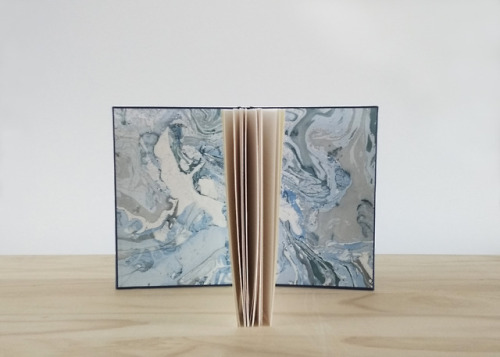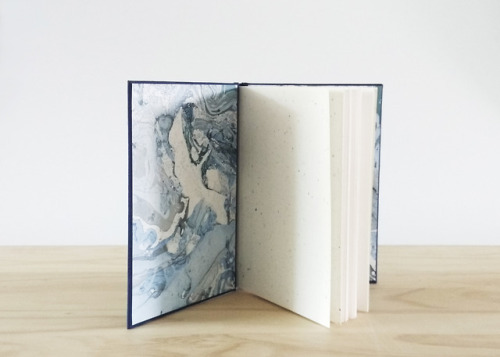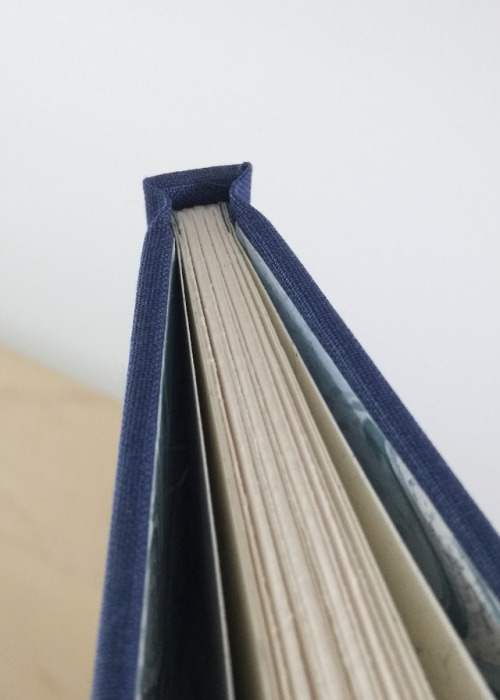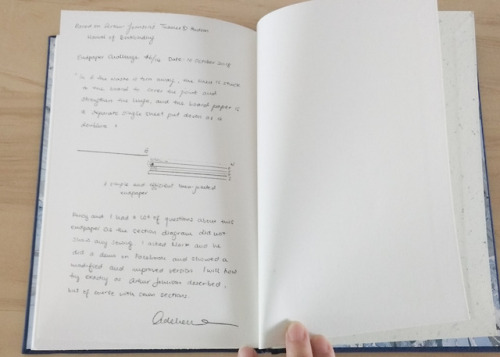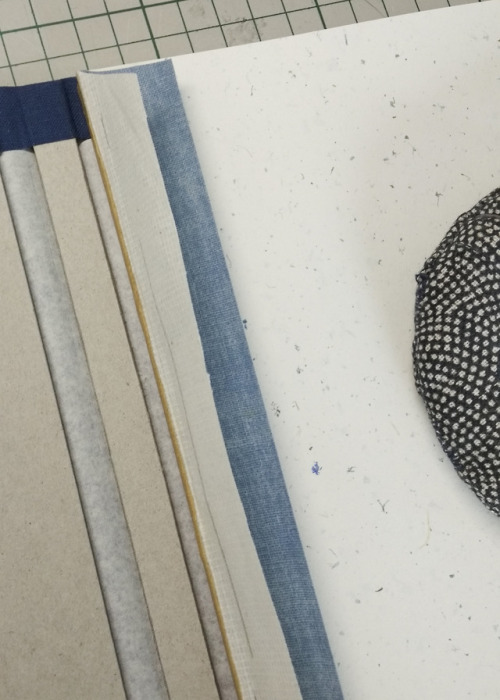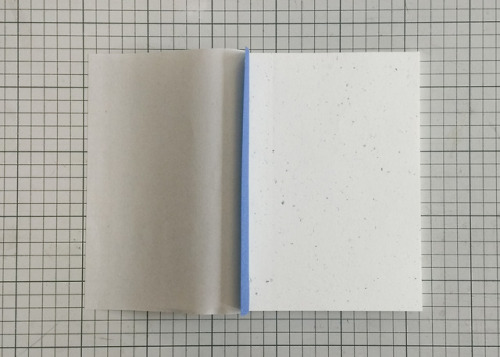dddots: Endpaper Challenge #6 This week’s endpaper challenge raised a lot of questions. The th
dddots: Endpaper Challenge #6 This week’s endpaper challenge raised a lot of questions. The thing that I find about Arthur Johnson sometimes is that the description of a method can be rather ambiguous. It is a double edged sword as it could either give room for the bookbinder to interpret and create something based on their knowledge, or it could totally confuse a new bookbinder who is looking at this manual for guidance. In Method 6, it is described as: “In 6, the waste is torn away, the linen is stuck to the board to cover the joint and strengthen the hinge, and the board paper is a separate single sheet put down as a doublure.” So firstly, in the diagram, there was a dot, that represent sewing, missing in the section. This led to questions about whether there is sewing in the sections. It is pretty obvious to an experienced bookbinder that it is a mistake in the diagram, but it still confusing. This is called “a simple and efficient linen-jointed endpaper”, which means that the linen is exposed along the hinge. I thought about how thin linen like Fray-not might make the book look a little unfinished, or raw, or even materials like Jaconette, might look a little strange, almost as if the book was incomplete. I decided to consult Mark about this endpaper method and seek his advice. He has kindly done a video on Facebook describing how the cloth-jointed endpaper is made. It is a modified and improved version where the folded endpaper is sewn to the textblock and the folded sheet is put down as the board paper. It is a good technique and I think it reduces the number of steps involved, including adding a waste sheet. I decided that perhaps I should follow as closely to what the manual says. But instead of a thin linen or Jaconette, I decided to use an unlined book cloth. It is book cloth that has been treated but not backed by any paper, so it is thin, but a bit tricky as the front side does not take adhesives too well. I also put in the waste sheet just to see what it really does, and in fact, I guess it was just included to prevent the flyleaf from getting dirty during the binding process. If you are a neat bookbinder, then the waste sheet is not very necessary. The benefits of this endpaper method is that the single sheet fly leaf between the section and the folded endpaper allows for printing to be done. For instance, if a customer wishes for a title page, or a dedication page to be added to the textblock, this is where a single sheet could fit into a home or professional printer. It can be then cut to size tipped between the folded endpaper and the textblock. This method also can be really beautiful because the cloth used for the joints, can be of a different colour from the covering cloth to give contrast and variety. The doublure also allows special printed sheets to be used. Overall, I find this endpaper rather useful, and perhaps, I might use this method more in restoration and tricky books. This book here measures 14.5 x 20.3cm, has beautiful hand made flotage papers as doublures. It is for sale at SGD35 (excluding shipping). -- source link
Tumblr Blog : www.dddots.com
#bookbinding#handmade#crafts#endpaper#instruction#dddots#endpaper challenge#endpaper challenge 6#arthur johnson
